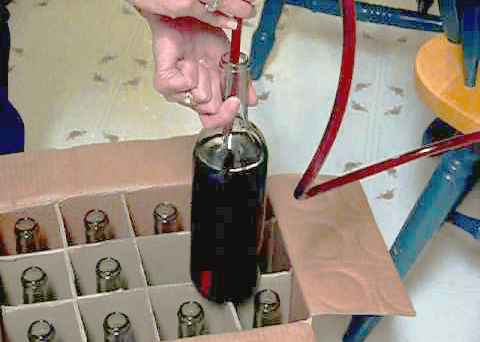 Hello,
Hello,
I recently opened a few bottles of a French Cab that I made / bottled in June 2013. The first bottle had quite a bit of sediment in the bottom and the wine did not have a distinct smell or taste. The second bottle was clear but had absolutely no taste whatsoever!? The third bottle was also clear but also lacks a definitive wine taste but is measurably better than the first two. How is it that each bottle from a single batch can yield dramatically different results. The wine seemed very clear when I bottled it last year and smelled typical of previous batches I made in the past. This is my first batch that did not come out and I cannot figure out what I did wrong!?
Name: Kris
State: Ohio
—–
Hello Kris,
Thank you for this great question. It’s one that comes up from time-to-time, so I think it’s great that we cover it on the blog.
First of all, your expectation is correct in thinking that all your bottles of homemade wine should taste the same, and normally this is the case. But there are some variations in small-batch winemaking that can at times cause the bottles of wine to taste different from one bottle to the next.
One of the main reasons variation happens occurs at bottling time. It is because the wine was not racked before bottling. Hopefully, you racked your wine before bottling, but it you didn’t, this could be what is going on.
Wines that are bottled at the beginning of bottling can turn out different than wines bottle at the end. This is because wine at the top of the carboy may have different characteristics than wine at the bottom of the carboy. While you may not be able to see it, proteins and other compounds can be concentrating towards the bottom while lighter elements can be rising to the top.
This is one of the many reasons we recommend that you always rack the wine before bottling your wine. Not only does it get the wine off any sediment, it evens it out or homogenizes all the compounds in the wine. Even wineries will take steps to help insure that each wine bottle is being filled with the exact same wine.
Kris, here are some other things that can affect a wine on a per bottle level:
- Color of the wine bottle. Clear wine bottles let in more UV rays than green. And green wine bottles let in more UV rays than brown. UV rays are a catalysts for oxidation. So if you are using a mix of bottles for your batch, this could be a reason for the variation.
- Amount of light. Is there a light source that hits only part of the batch while it is being stored? More light means the potential for more oxidative effects. It’s always best to store your wines in the dark.
- Variation in temperature. Are some of the bottles closer to a heat source that other, heat vents, outer-exposed walls, etc? Just like excessive UV rays, warmer temperatures can promote oxidation.
- Variation in corks. Corks are a natural product. They are produced from the bark of a corks tree. Because of this, no two corks are exactly the same. One cork my allow more air to pass than the other. This slight variation can cause one bottle of wine to age differently than the next.
I think you get the idea…
The reason your bottles of wine are varying could be because of any of these — or a combination of these — but having said this, I still have to go back to the fact that it is usually because the wine was not racked directly before bottling.
Best Wishes,
Ed Kraus
————————————————————————————————————–
Ed Kraus is a 3rd generation home brewer/winemaker and has been an owner of E. C. Kraus since 1999. He has been helping individuals make better wine and beer for over 25 years.
